Week 9: Earthquakes and Volcanoes
Dr. Ted Neal; Alexis Hatvick; and Josie Mbaye
🧠Big Ideas & Big Questions
- How do volcanoes and earthquakes form?
- What are volcanoes and earthquakes?
- What are the dangers associated with volcanoes and earthquakes?
Volcanoes
A volcano is a vent that allows magma, rock fragments, ash, and gases to escape to the surface of a planet or moon. Volcanoes have created more than 80% of Earth’s surface. Volcanoes are found on every continent and on the sea floor in Earth’s oceans, as well as on several planets and moons in space.
When the material (magma, ash, and gases) from a volcano comes to Earth’s surface, it is called an eruption. There are two different types of volcanic eruptions: explosive and effusive. Explosive eruptions are when the magma is fiercely fragmented and rapidly expelled from a volcano. Effusive eruptions are when lava steadily flows out a volcano onto the ground.
- lava steadily flows out a volcano onto the ground
- occurs when magmas reaches the surface
- builds up gentle sloping shield volcanoes
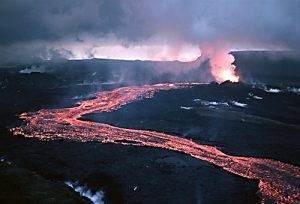
- the magma is fiercely fragmented and rapidly expelled
- occurs where cooler magmas reaches the surface
- builds up steep sloping composite volcanoes
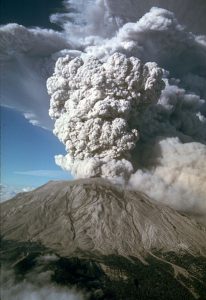
How Volcanoes are Formed
Volcanoes form when magma from deep within Earth rises to the surface. Volcanoes can be formed in 3 ways: converging tectonic plates, diverging tectonic plates, or over a hot spot.
- Convergent plates
When an oceanic plate converges with a continental plate, the oceanic plate subducts under the continental plate forming a subduction zone. At this zone, the denser plate is pushed under the other and the rock melts under intense heat and pressure as it is pushed further into Earth. Thus, the melted rock turns to magma and is able to rise to Earth’s surface as a volcano.
- Divergent plates
When two plates diverge, magma rises up to fill the space in between and an underwater volcano forms.
- Hot spots
A hot spot is an extremely hot area in the mantle where magma can rise up to the surface and create volcanic activity. The heat comes from deep within Earth, melting rock at the crust and forming magma. More typically, volcanoes occur along plate boundaries, but hot spots are located in the middle of tectonic plates. Yellowstone National Park in Wyoming is a supervolcano located over a hot spot. It hasn’t erupted for 174,000 years and is not expected to erupt soon. However, features in the park such as the geyser Old Faithful are fueled by volcanic activity over the hot spot.

The Hawaiian Islands, an island arc, were also formed by hot spot volcanoes on the Pacific Plate. The Pacific Plate is slowly moving northwest over time while the hot spot stays in the same place. As such, different areas of the plate are located over the hot spot at different times. Material from underwater volcanic eruptions at the hot spot builds up until it eventually reaches the surface, forming an island.
Based on the ages of rocks found on the islands, scientists can determine that the westernmost island, Kauai, is the oldest. 5 million years ago, Kauai was located over the hot spot. As the Pacific Plate shifted west, new islands in the chain were formed. Therefore, the easternmost island, the Big Island, is the youngest island and it is currently located over the hot spot. Eventually, new islands will continue to form in Hawaii. Scientists have detected a the beginnings of a new island, named Loihi, located southwest of the Big Island. Although it is currently located far below the ocean surface, volcanic eruptions have started to form Loihi and it will reach the surface in tens of thousands of years.
Video credit: “Hawaiian Islands Formation” by Khan Academy is licensed under CC BY-NC-SA 3.0. Note: All Khan Academy content is available for free at khanacademy.org.
Types of Volcanoes
There are three main types of volcanoes:
Composite – Also called “stratovolcanoes”, these are generally composed of lava flows, mudflow deposits, lava domes, and pyroclastic deposits. They can be active for long periods and erupt periodically. One famous example is Mount St. Helens in Washington State, which erupted back in 1980 and destroyed forests and towns.
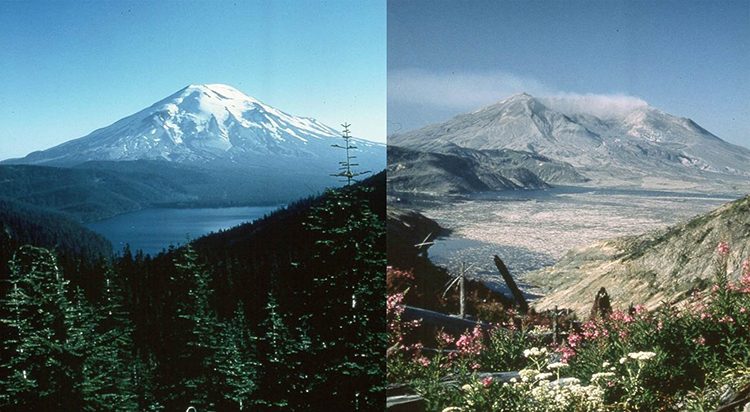
Cinder Cone – The most common type of volcano in the world, this type is likely the first picture you imagined as a child. True to their name, cinder cone volcanoes are steep and composed primarily of dark cinders. Parícutin Volcano is one of the few volcanoes scientists have been able to study the lifespan of, as it appeared in 1943 and went dormant in 1952.
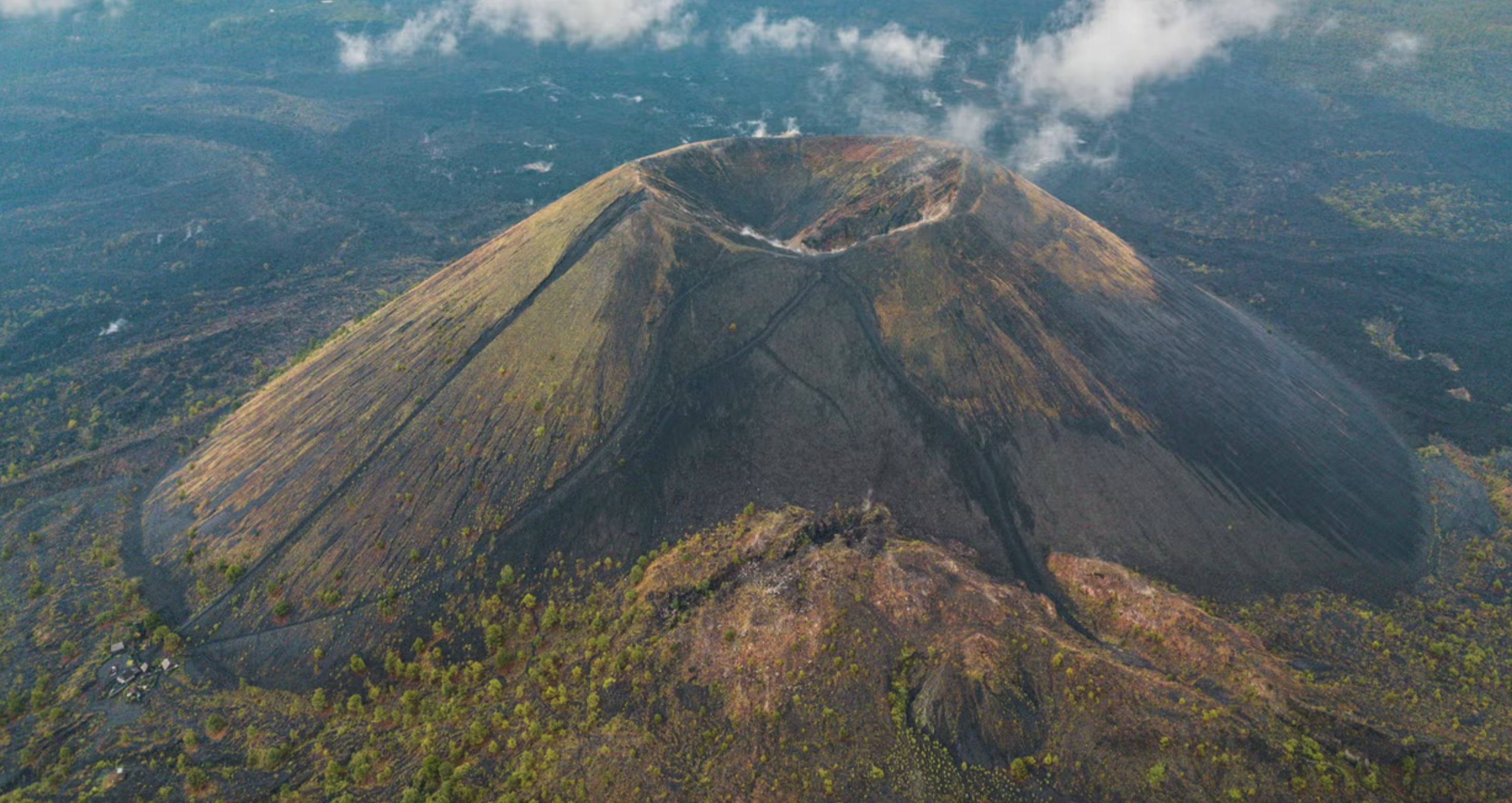
Shield – These volcanoes are broad, gently sloping with a wide base (similar to its namesake). Some of the most famous examples lie in Hawaii: Mauna Loa and Kīlauea. In fact, these two volcanoes are a couple of the most active ones on the planet!
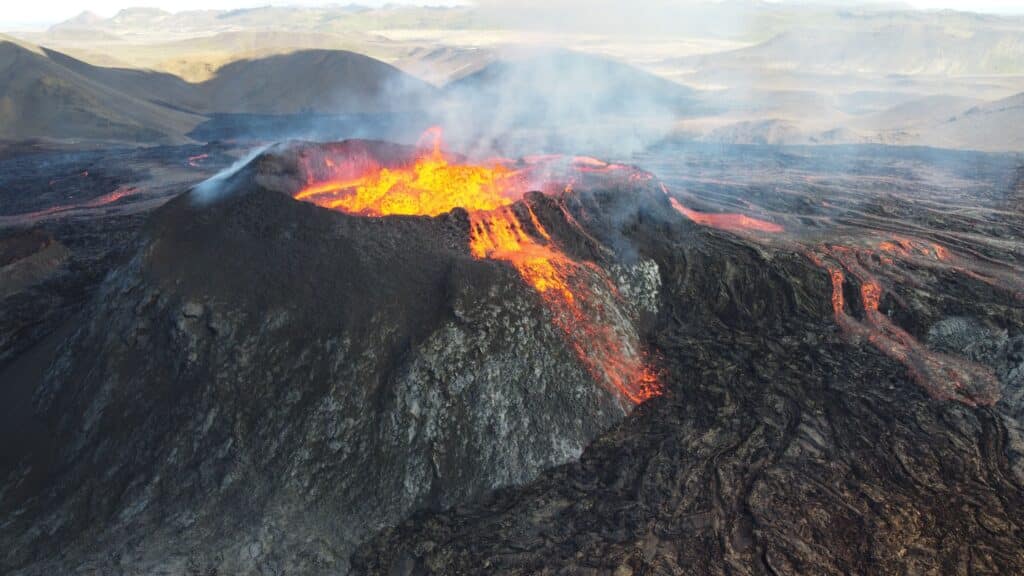
Earthquakes
Tectonic plates float on the mantle, the layer below the crust. Breaks in the rock of the plates are called faults; these can occur in the form of plate boundaries as well as smaller cracks on the interior of plates. The rock moves along these fault lines at transform boundaries. Sometimes, however, they are unable to easily pass. The plates continue to push into or slide past each other which causes intense stress to build up. Eventually, the rocks will snap and the pressure will be released in the form of powerful seismic waves. This causes the ground to shake–an earthquake.

There are two types of waves scientists use to determine where an earthquake has occurred:
- P-waves: Can travel through any type of material
- S-waves: Can only travel through solid material
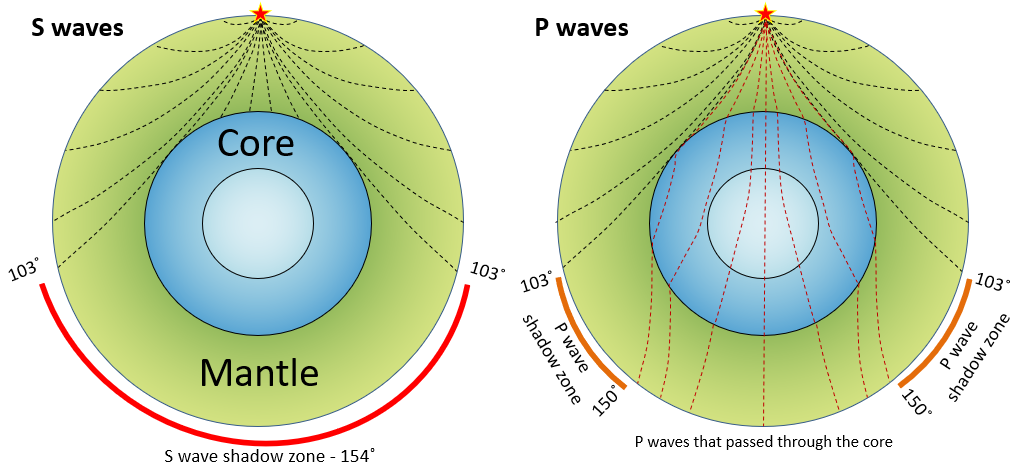
Using specialized equipment, scientists can measure these waves to determine the epicenter (starting point) of an earthquake as well as its magnitude (amount of energy released).
Next Generation Science Standards: NGSS
Performance Expectations
| 5-ESS2-1. | Develop a model using an example to describe ways the geosphere, biosphere, hydrosphere, and/or atmosphere interact. [Clarification Statement: Examples could include the influence of the ocean on ecosystems, landform shape, and climate; the influence of the atmosphere on landforms and ecosystems through weather and climate; and the influence of mountain ranges on winds and clouds in the atmosphere. The geosphere, hydrosphere, atmosphere, and biosphere are each a system.] [Assessment Boundary: Assessment is limited to the interactions of two systems at a time.] |
|---|
| MS-ESS2-1. | Develop a model to describe the cycling of Earth’s materials and the flow of energy that drives this process. [Clarification Statement: Emphasis is on the processes of melting, crystallization, weathering, deformation, and sedimentation, which act together to form minerals and rocks through the cycling of Earth’s materials.] [Assessment Boundary: Assessment does not include the identification and naming of minerals.] |
|---|
| MS-ESS1-4. | Construct a scientific explanation based on evidence from rock strata for how the geologic time scale is used to organize Earth’s 4.6-billion-year-old history. [Clarification Statement: Emphasis is on how analyses of rock formations and the fossils they contain are used to establish relative ages of major events in Earth’s history. Examples of Earth’s major events could range from being very recent (such as the last Ice Age or the earliest fossils of homo sapiens) to very old (such as the formation of Earth or the earliest evidence of life). Examples can include the formation of mountain chains and ocean basins, the evolution or extinction of particular living organisms, or significant volcanic eruptions.] [Assessment Boundary: Assessment does not include recalling the names of specific periods or epochs and events within them.] |
|---|
| MS-ESS2-2. | Construct an explanation based on evidence for how geoscience processes have changed Earth’s surface at varying time and spatial scales. [Clarification Statement: Emphasis is on how processes change Earth’s surface at time and spatial scales that can be large (such as slow plate motions or the uplift of large mountain ranges) or small (such as rapid landslides or microscopic geochemical reactions), and how many geoscience processes (such as earthquakes, volcanoes, and meteor impacts) usually behave gradually but are punctuated by catastrophic events. Examples of geoscience processes include surface weathering and deposition by the movements of water, ice, and wind. Emphasis is on geoscience processes that shape local geographic features, where appropriate.] |
|---|
| MS-ESS2-3. | Analyze and interpret data on the distribution of fossils and rocks, continental shapes, and seafloor structures to provide evidence of the past plate motions. [Clarification Statement: Examples of data include similarities of rock and fossil types on different continents, the shapes of the continents (including continental shelves), and the locations of ocean structures (such as ridges, fracture zones, and trenches).] [Assessment Boundary: Paleomagnetic anomalies in oceanic and continental crust are not assessed.] |
|---|
DCI
2nd Grade
ESS1.C: The History of Planet Earth
ESS2.B: Plate Tectonics and Large-Scale System Interactions
fourth grade
ESS1.C: The History of Planet Earth
ESS2.B: Plate Tectonics and Large-Scale System Interactions
fifth grade
ESS2.A: Earth Materials and Systems
Middle school
ESS1.C: The History of Planet Earth
ESS2.A: Earth’s Materials and Systems
ESS2.B: PLate Tectonics and Large-Scale System Interactions
Crosscutting Concepts
Second grade
Patterns
Stability and Change
Fourth grade
Patterns
Cause and Effect
Fifth grade
Scale, Proportion, and Quantity
Systems and System Models
A vent that allows magma, rock fragments, ash, and gases to escape to the surface of a planet or moon.
When two tectonic plates converge, the denser plate is pushed under the other.
The boundary between two convergent tectonic plates where one plate subducts under the other.
Molten rock beneath Earth's surface.
A chain of islands in the ocean in an arc shape. Formed by two convergent oceanic plates and volcanic eruptions.
The middle layer of Earth between the crust and the core.
Break or crack in the plates on Earth's crust.
Tectonic plates sideswipe each other.

